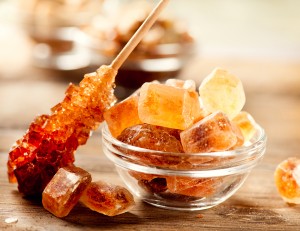Our sick, overweight population has reached new status.
 I like the way Brene’ Brown says it, “We are the most in-debt, obese, addicted and medicated adult cohort in U.S. history”.
I like the way Brene’ Brown says it, “We are the most in-debt, obese, addicted and medicated adult cohort in U.S. history”.
Statistics on obesity and diabetes have reached staggering heights and Brown is correct; never in history have we been this sick and fat.
The Center for Disease Control* says that at this rate, by the year 2050 one in three Americans will develop diabetes.
Sugar is the bad guy. We’ve seen it written, “Sugar is poison”. “Sugar is toxic.” And here’s one I use quite often; “Sugar expedites the aging process”. We’ve come to think of it as devilish, bleached, stripped, bastardized, nasty stuff.
And yes, it’s everywhere, not only added by manufacturers to most packaged foods, but sugar occurs naturally in every fruit and vegetable in the plant kingdom.
Trying to decipher the quagmire of names that are used to label sugar can be exhausting at best.
The Corn Refiners have just petitioned the FDA to label HFCS as corn sugar just to mess with our heads even more.
If we choose to eat well and live with vitality it requires a diet of whole, natural foods, low in empty sugars. We’re going to have to reel in this broad net of blame and get smarter about sugar so we can solve our problem of disease.
To clarify—Glucose is the name for sugar in your blood. Your body cannot function without it. Fructose (accompanied by nutrients and fiber) is the sugar in fruit.
Fresh fruit, especially when eaten alone binds with metals and other toxins escorting them out of your body and is cleansing to your system. HFCS or High Fructose Corn Syrup is made from the genetic modification of corn. It depletes leptin storage, which keeps us feeling hungry and can be addictive.
It’s widely used because it’s inexpensive and has preservative qualities.
Sucrose may have started out from beets or cane sugar but refined and processed. Generally refers to bleached, white table sugar, with zero nutritional value.
If you are an American living in 2013 you’ve been groomed to have a sweet tooth. That’s okay, we can work with that but we’ll have to navigate carefully around some goodies we have become accustomed to.
Taste is acquired, so learning to love Twinkies can happen just as easily as learning to love raw fish. If you have a sweet tooth, you came by it honestly with practice.
Walter Willet of the Harvard School of Public Health* said about diabetes, “Apart from lung cancer, there is no other disease that can be almost eliminated with simple lifestyle changes”.
It comes back to personal responsibility. The way to manage yourself out of the drive to eat Twinkies and cupcakes is to find a satisfying replacement. But a little patience goes a long way here.
In the beginning let’s shoot for tolerable replacement.
When given a chance tolerable can turn in to satisfying. But you’ve got to set yourself up for success. Here’s one of those simple lifestyle changes you can make: Keep plenty of your favorite fresh, seasonal fruit on hand—perfect plump, ripe peaches, big juicy oranges, a little basket of rainier cherries, whatever sounds good to you.
Make sure they have a chance to ripen on the counter to perfection. Then refrigerate until really cold. Slice or present it just the way you like it so that when the tub of frozen butterfat and sugar (AKA ice cream( comes out you won’t be tempted because you’ve been looking forward to that perfect, juicy, tastes-like-summer peach!
Use chopped dates to sweeten muffins and smoothies.
Use agave nectar to sweeten tea, or other drinks. Maple syrup and honey are whole foods and can be used for cooking and sweetening most anything, it just takes practice to adjust to taste. But as you practice you’ll be reducing the amount of white sugar and HFCS in your diet and still feeling like you can have a treat.
We remember Paracelsus, the father of toxicology for “the dose makes the poison”. It’s true that when consuming the wrong types of sugar in high amounts we’re poisoning ourselves, setting ourselves up for disease. But with the availability of fresh fruit and other whole food options you can satisfy your sweet tooth and reduce your risk of diabetes.
Loa Blasucci is a contributing blogger for JenningsWire.
*SOURCE: Center for Disease Control and Prevention
*SOURCE: Harvard Gazette





